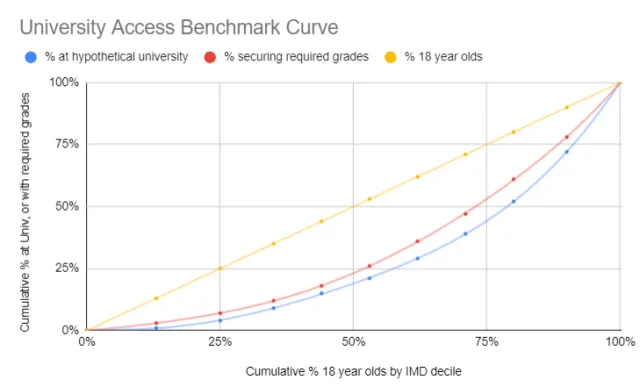One of these is to recommend a new benchmark that looks at the extent to which universities are supporting social mobility. While HESA, the OfS, Sutton Trust and others have previously published a range of benchmarks and indicators, we felt that there was an opportunity to produce something that uses recent data, takes into account the differing academic requirements of more selective universities and is more sophisticated than considering students in a binary way (e.g FSM/disadvantaged vs Non-FSM/advantaged).
The Commission are considering various options. Our Director, John Craven, has proposed that we create a new “Social Mobility Coefficient” and “Access Curve” using IMD data on academic qualifications and university entrance, applying a similar calculation methodology to that used to calculate a Gini Coefficient and Lorenz Curve.
The Coefficient provides a single summary measure that takes into account the experiences of students in all IMD deciles, and can be used to compare universities with each other, and over time. The Access Curve would show where universities are in line with their benchmarks, and where there are gaps. For example, it would show if students from a particular decile such as 4 or 7, were accepting places at a lower rate than you’d expect based on their qualifications, or if the top decile do far better than one would expect based on grades alone. This helps focus attention on all students rather than just a single group (e.g. FSM) that are labelled as disadvantaged.
The measures also show the extent to which unequal admissions at university are a result of prior attainment or other factors related to attraction/admissions. A hypothetical curve is shown below. The initial feedback on the concept from a range of stakeholders has been good, and over the months ahead, we plan to seek further feedback and look at the actual data for universities in England. If you have any feedback, please don’t hesitate to get in touch with the team.
